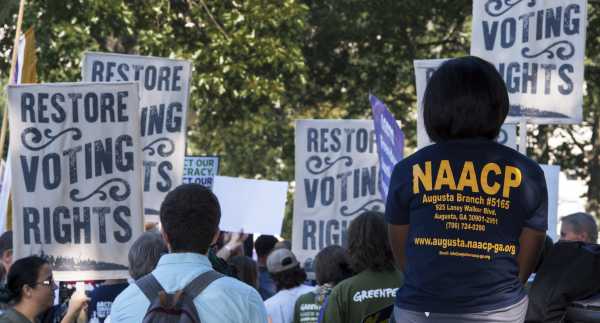
How Shelby County v. Holder upended voting rights in America
On the sixth anniversary of the Supreme Court ruling, civil rights groups say it’s time to fully restore the Voting Rights Act.
By
P.R. Lockhart
Updated
Jun 25, 2019, 7:49pm EDT
Share
Tweet
Share
Share
How Shelby County v. Holder upended voting rights in America
tweet
share
In recent years, threats to voting rights and the possibility of voter suppression have become increasingly serious concerns for civil rights groups. This was on full display in the 2018 midterm elections, as voting laws and regulations in several states impacted high-stakes races in ways that disproportionately affected voters of color.
But the concerns raised by these elections did not originate with high-profile 2018 contests in places like Georgia and Florida, both states where black, Latino, and Asian American voters struggled to cast a ballot. Instead, these issues can in part be directly traced back to a 2013 Supreme Court ruling in the case Shelby County v. Holder.
That ruling, which turns six years old this week, invalidated a key portion of the Voting Rights Act of 1965, long seen as one of the most important civil rights laws of the past century. On June 25, 2013, the court’s conservative majority ruled that the government was using an outdated and unconstitutional process to determine which states were required to have their voting rules approved by the government. Before the ruling, nine states (and several other counties and townships) had been subjected to this requirement.
This “preclearance” was intended to ensure that these areas — each with a history of discriminatory voting laws — did not pass new restrictions impacting the ability of voters of color to cast a ballot. But a county in one such state, Alabama, argued that the requirements (all part of Sections 4 and 5 of the Voting Rights Act), were excessive and unnecessary nearly 50 years after the legislation’s passage. When a majority of the court agreed, it dealt a heavy blow to what civil rights advocates have long seen as the “heart of the Voting Rights Act.”
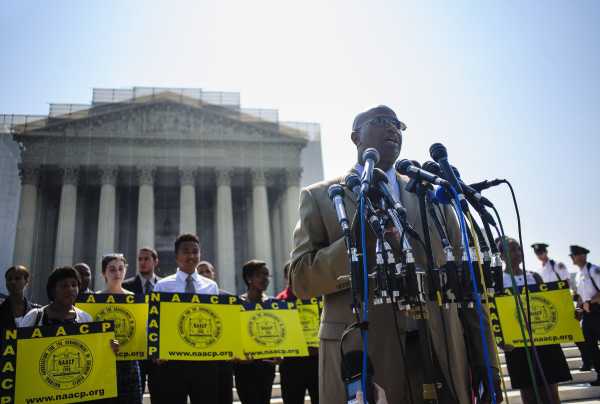
The ruling had an impact that continues today, with several civil rights and voting rights groups telling Vox that the post-Shelby era has presented various difficulties: an uptick in legal actions taken against states, increased costs for monitoring and pursuing litigation over voting restrictions, and, perhaps most significantly, more laws creating new requirements in the voting process — many of them disproportionately affecting black voters and other communities of color.
“Since Shelby, states have really opened the floodgates to voter suppression, and we’ve seen laws that have discriminated against voters of color all across the country,” says Leigh Chapman, the director of the voting rights program at the Leadership Conference on Civil and Human Rights.
Advocates say that in a post-Shelby world, not only have they have lost a key tool in ensuring all voters have an equal and unimpeded right to cast a ballot, voting rights enforcement has also become much harder.
What the Shelby County v. Holder decision meant for the Voting Rights Act
When the Voting Rights Act was passed in 1965, it included provisions requiring that states with low black voter turnout and a history of discriminatory voting laws have future elections changes federally approved to ensure that they did not hamper voters from marginalized communities.
To do this, the VRA relied on two closely linked provisions. Section 5 of the act established that states could be subjected to “preclearance,” requiring all major voting and election systems changes to be approved by the Justice Department or a federal court. To determine which areas could be placed under preclearance, the VRA relied on a different part of the legislation — known as Section 4b — which created a formula outlining the types of histories that needed to be present in a jurisdiction.
In 2010, officials representing Shelby County, Alabama — which at the time was under preclearance — filed a federal lawsuit against the Justice Department and then-Attorney General Eric Holder, challenging the constitutionality of both Section 4b and Section 5, arguing that they were outdated and should no longer be used. DC courts ruled against the county in 2011 and on its first appeal 2012, but county officials appealed to the Supreme Court.
In a 5-4 ruling, the court’s conservative members argued that the conditions that justified preclearance in 1965 didn’t apply in 2013. “Coverage today is based on decades-old data and eradicated practices,” Chief Justice John Roberts wrote in the majority opinion. While racial disparities in voter registration and turnout “was compelling evidence justifying the preclearance remedy and the coverage formula” in 1965, Roberts said that “there is no longer such a disparity.”
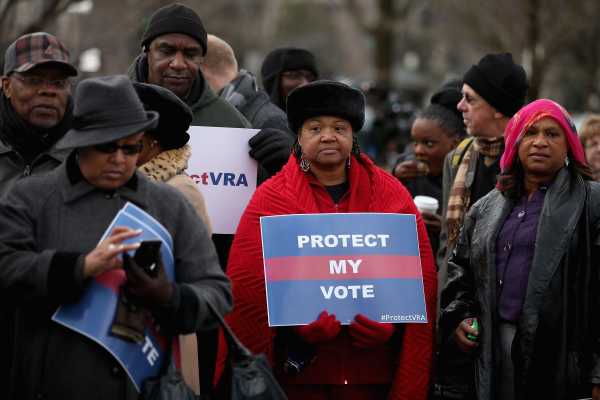
However, the Shelby ruling was slammed by the court’s more liberal justices, who argued that the discrimination and racial disparities in voting that prompted the creation of preclearance had not disappeared. Justice Ruth Bader Ginsburg wrote in her dissent that “throwing out preclearance when it has worked and is continuing to work … is like throwing away your umbrella in a rainstorm because you are not getting wet.”
The Shelby ruling released nine states — Alabama, Alaska, Arizona, Georgia, Louisiana, Mississippi, South Carolina, Texas, and Virginia — from the previous preclearance coverage formula. The ruling also affected some counties and townships in California, Florida, Michigan, New York, North Carolina, and South Dakota.
It’s important to note that the ruling itself did not find Section 5 unconstitutional and instead focused solely on the coverage formula in Section 4b. To resume using Section 5, the court said that Congress, which created the VRA in 1965, needed to enact a different, constitutional preclearance requirement. But Congress, despite the efforts of Democrats, still has not done so, leaving little federal oversight of voting in the US.
Voting rights advocates say that the striking down of Section 4b — and the resultant declawing of Section 5 — blunted one of the strongest measures that held jurisdictions accountable for their proposed voting laws.
“Section 5 was a sunshine law,” says Leah Aden, the deputy director of litigation for the NAACP Legal Defense and Educational Fund. “The burden was on jurisdictions to prove that a law wasn’t going to make the experience of black and Latino voters, and Native American voters, and Asian American voters worse off.”
Since Shelby, many states have passed controversial restrictive voting laws that impact communities of color
According to the Brennan Center for Justice, a policy and research group that monitors new voting restrictions, there have been hundreds of “harsh measures making it harder to vote” introduced in state legislatures since 2010. Many of these were introduced after the 2013 Shelby ruling, and, as a federal commission noted last year, have been seen both in states previously subjected to preclearance and states that were not.
These restrictions have taken many forms, including strict photo ID requirements, limitations on who can provide assistance at polling places, the curbing of early voting days, and the closing of hundreds of polling places across the US. Other measures, like the purging of voters from state voter rolls and drawing election districts in a way that curbs the power of voters of color, have affected how much power communities of color hold in elections.
“Shelby has made it harder — and made it more important — to affirmatively protect these communities from the spread of restrictions,” John Yang, the president and executive director of Asian Americans Advancing Justice-AAJC, tells Vox.
Yang notes that laws and election management practices — some of which limit the availability of ballots in different languages, have strong photo ID restrictions, and scrutinize the ballots of voters who are naturalized citizens — have all negatively affected Asian American voters. Organizations working with other marginalized communities, including Latino voters, black voters, and Native American voters, have also noted that other racial groups are disproportionately affected by restrictions passed in the six years since Shelby.
The passing of these laws has been made possible by the defanging of preclearance, which allowed the federal government to weigh in on these restrictions before they could take effect, creating some standardization in what was not allowed in state election systems. After Shelby, though, states were allowed to enact measures that would likely have been reviewed by Section 5 in earlier years.
Civil rights groups say this is especially the case in places like Texas, where a strict voter ID requirement first passed in 2011 (the law did not take effect until 2013 when the state was no longer under preclearance) mandated that voters show a government-issued photo ID, driver’s license, or passport before voting. That requirement was later altered by the state legislature in 2017 after a court order, but the decision was not supported by the federal government, with the Justice Department reversing its earlier opposition to the law shortly after President Donald Trump entered office.
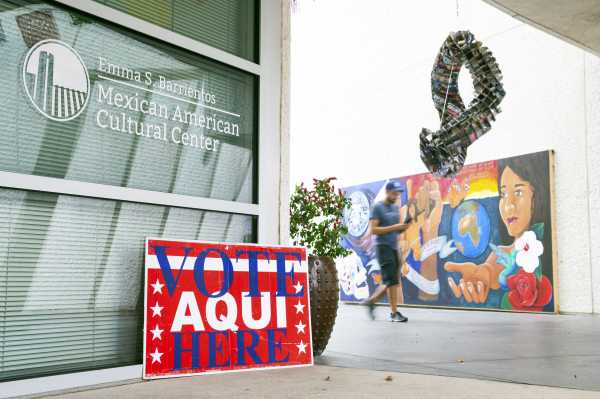
More recently, Texas officials were sued after a botched review of the state’s voter rolls resulted in the state unnecessarily challenging the citizenship status of thousands of voters, many of whom are naturalized citizens. Acting Texas Secretary of State David Whitley, a Republican, later resigned from office after agreeing to end the controversial review as part of a settlement.
Thomas Saenz, president and general counsel for the Mexican American Legal Defense and Educational Fund (MALDEF), says that restrictions in places like Texas have been particularly hard for voters who immigrated to the US. He adds that many of the restrictions put in place in recent years have affected Latino voters, a large and growing portion of the state’s electorate.
“The right to vote is essential to every other right given to communities of color and other populations,” he says. Saenz adds that while the Shelby ruling has clearly had an impact on voters of color in multiple states, it won’t be until the next round of redistricting after the 2020 Census — the first where former Section 5 states can draw maps without getting them pre-approved — where the “full scope of the loss caused by Shelby” will be seen.
Civil rights groups have had successes and losses in the fight since Shelby
But threats to Latino voters have led to at least one successful effort to restore preclearance in a part of Texas. In 2017, a lawsuit from MALDEF and other groups argued that election officials in Pasadena, Texas, had diluted the power of Latino voters when they created two at-large seats on Pasadena’s eight-seat city council. To do so, the city condensed residents into six districts, a move that halted the momentum for districts with predominantly Latino voters to gain a majority of council seats. A federal judge ruled that Pasadena violated the Voting Rights Act, and placed the city under preclearance.
Other important victories for voting rights advocates came a year earlier in 2016, when a lawsuit over a set of strict North Carolina voting laws introduced immediately after the Shelby decision led to a federal court ruling that the state had targeted black voters with “almost surgical precision” in an effort to reduce their turnout. North Carolina Republicans later appealed the ruling in the hopes of restoring the law, but the Supreme Court declined to hear the case in 2017.
But not every high-profile voting restriction has been overturned by a court or blocked ahead of an election. Some restrictions, like a North Dakota law requiring photo IDs to have a residential address, including for those living on tribal reservations without formal streets, have been upheld even as lawyers argued that they disproportionately affected Native Americans’ ability to vote.
And a series of lawsuits over several voting laws and restrictions in Georgia occurred in the background of the state’s 2018 gubernatorial election. Voting rights advocates argued that Brian Kemp, then Georgia’s secretary of state and a Republican gubernatorial candidate, had diluted the power of voters of color through strict voter registration requirements, the closure of more than 200 polling places, and the purging of hundreds of thousands of voters. Critics said Kemp also failed to adequately prepare for long lines and potential voting issues on Election Day.
Kemp won the election, but the state is currently facing a lawsuit from Fair Fight Action, a group founded by Kemp’s Democratic gubernatorial opponent Stacey Abrams. Fair Fight argues that voting restrictions and other barriers in the state created a system that effectively disenfranchised many Georgia voters, especially voters of color. The lawsuit calls for Georgia to be placed back under federal preclearance.
The House Oversight Committee is also investigating allegations of voter suppression in Georgia, Texas, and Kansas.
“Under [Kemp’s] regime and without the oversight of the Justice Department, facially neutral rules for removing voters…have become tools for voter purges,” Abrams testified at a June 25 hearing on the Voting Rights Act held by the House Judiciary Subcommittee on the Constitution, Civil Rights, and Civil Liberties.
During the hearing, Abrams noted that Georgia, another state that has passed restrictions after being released from preclearance, was a crucial example of what has happened in the years since the Shelby ruling. She added that while there have been numerous voting rights issues in states previously subjected to the Section 4b coverage formula, “more states have joined the party of voter suppression” in recent decades, with other states engaging in widespread voter roll purges and adopting voting restrictions that disproportionately affect voters of color.
“Voter suppression is adapting to changes in society,” she said.
In her testimony, Abrams also spoke of the expensive nature of filing lawsuits over voting restrictions, something several advocates also highlighted in interviews with Vox. These lawsuits are possible under Section 2 of the Voting Rights Act, which allows for voting laws to be struck down if they are found by a court to be discriminatory. But voting rights advocates say that stopping restrictions in this way is far less efficient than the use of Section 5.
This is largely due to the fact that instead of reviewing a restriction and stopping it before it even takes effect, Section 2 means that a law is usually enacted as a lawsuit over it continues. Voting rights groups say this requires more effort from civil rights groups to challenge a law, and also creates additional expenses both for civil rights groups and county and state officials.
“We contend that if Section 5 had been in place, we would not have seen the sort of mess that we’ve seen,” says Aden of the LDF. “Civil rights groups could be working on other things but instead we’re using our resources to deal with things that Section 5 would’ve addressed more easily.”
With these problems in mind, voting rights advocates say it’s time to fully restore the Voting Rights Act
As restrictions in the wake of Shelby v. Holder have been found to disproportionately affect — and in some cases deliberately target — voters of color, lawmakers behind these restrictions have argued that laws are not discriminatory.
Instead, a primarily Republican group of lawmakers have said that the measures are needed to combat voter fraud, even though there’s little evidence that significant fraud exists. These lawmakers also say that their efforts are a legally acceptable attempt to carve out a partisan advantage rather than deliberately curb the voting power of black, Latino, and Asian American voters, despite the fact that due to the demographic nature of the current political parties, these goals are often one and the same.
In the states once subject to preclearance, these issues would have been halted to some extent before Shelby. But without the full VRA in place, voters and civil rights groups have been forced into a largely reactionary stance, filing lawsuits over restrictions after they have been enacted or passed by legislatures rather than being able to get a federal review of them before their implementation.
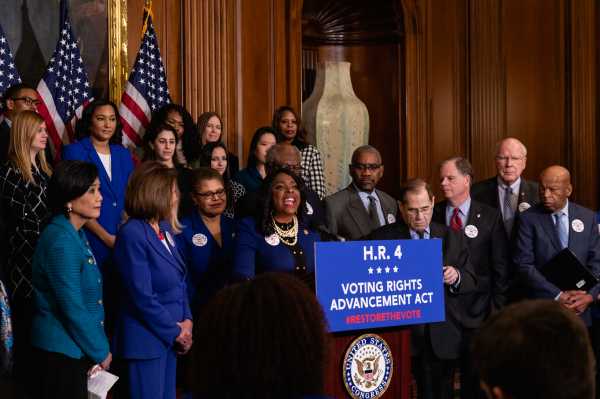
It is also true that many states with a significant number of voting laws on the books are still looking to pass new restrictions. For example, at the same time that lawyers in Texas were in court preparing to settle the lawsuit over the unnecessary flagging of naturalized citizens, the state legislature was considering a measure that would create new criminal penalties for people who attempted to vote without knowing they were ineligible. The measure did not pass before the end of the 2019 legislative session.
And Tennessee, the 49th state in the country in voter turnout in 2016, recently enacted — and was subsequently sued over — a law that fines and punishes voter registration groups for submitting too many incomplete and inaccurate forms.
As these challenges remain, voting rights groups argue that it is necessary for Congress to restore the Voting Rights Act by enacting a new system for preclearance. Such a system is included in the Voting Rights Advancement Act, also known as HR 4, a measure introduced by Democrats earlier this year. The measure would “give the federal government a stronger ability to take action against states with a history of discrimination,” according to Vox’s Ella Nilsen.
“We can’t unring the bell,” the bill’s sponsor, Alabama Rep. Terri Sewell, told Nilsen in December. “What we’ve seen is that since Shelby, more than 30 states have imposed greater requirements for voting, and in a lot of those states, we’ve seen elections take place that have later been found to have had intentional discrimination.”
Sewell’s measure would subject states to preclearance if they had a history of discrimination in its voting system or electoral maps in the past 25 years. The formula would rely on more recent examples of voting rights violations than Section 4b did before it was struck down.
Sewell’s bill, which was initially part of a broader set of Democrat-sponsored anti-corruption reforms known as HR 1, the For the People Act, would also create a preclearance requirement for any voting or election law on a list of “known practices” — measures already shown to disproportionately affect voters of color. Chapman, the Leadership Conference voting rights director, says that this provision in particular “would really modernize the preclearance formula.”
Other efforts to restore the Voting Rights Act have come from 2020 presidential candidates. Beto O’Rourke, for example, has a voting rights and democracy reform platform that calls for automatic voter registration, cracking down on voter ID laws, limiting aspects of voter roll purges, and also pushes against other voting restrictions. And Sen. Elizabeth Warren (D-MA) used the 2019 Shelby anniversary to announce her own voting rights platform that calls for the passage of both the Voting Rights Advancement Act and the Native American Voting Rights Act as well as several election security measures.
Chapman says that the attention candidates are giving voting rights matters in the larger push for momentum for additional changes to voting rights in the US, but she notes that restoring the VRA itself largely lies with Congress.
Still, as another Shelby County v. Holder anniversary arrives without full government oversight of the VRA, a protection that has now been missing for multiple election cycles and seems likely to remain absent in the 2020 elections, advocates say that it is imperative that voting rights be protected and that the country move toward expanding — not limiting — access to the ballot.
“Our voting experience in this country should not be that things are relatively easy for certain voters, while setting up hurdles for others,” Aden says. “We should not have a two-tiered system of democracy.”
Sourse: vox.com






